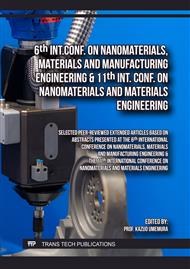p.17
p.45
p.51
p.65
p.73
p.79
p.91
p.115
p.121
Fabrication of Plant-Based Customized and Nutritious Foods by Food Layered Manufacturing (FLM)
Abstract:
Food Layered Manufacturing (FLM) integrates additive manufacturing with culinary arts to meet the growing demand for personalized and sustainable food solutions. This technique allows for the precise deposition of edible materials in layers, creating complex and custom food structures with desired shapes, textures, flavours, and nutritional profiles. The research explores the potential of 3D printing technology to create sustainable and nutritious food products using Symbiotic Culture of Bacteria and Yeast (SCOBY), Butterfly Pea Flower (BPF), and beetroot (BR). By optimizing printing parameters such as composition ratios, nozzle height, printing speed, nozzle diameter and extrusion rates, we aim to develop a cost-effective and environmentally friendly method for food production. Our findings demonstrate the feasibility of using these plant-based inks in 3D printing, highlighting their potential to enhance food security and reduce waste. Additionally, FLM offers transformative potential in the food industry, enabling the creation of customized and nutritious foods with precision. This research delves into the technological aspects, material properties, nutritional implications, and future prospects of 3D-printed plant-based foods. The goal is to establish additive manufacturing as an eco-friendly and sustainable solution for personalized nutrition and food production.
Info:
Periodical:
Pages:
115-120
Citation:
Online since:
May 2025
Authors:
Price:
Сopyright:
© 2025 Trans Tech Publications Ltd. All Rights Reserved
Share:
Citation:



